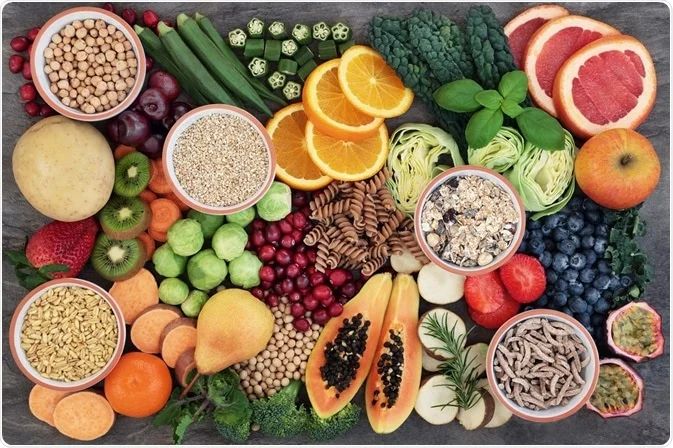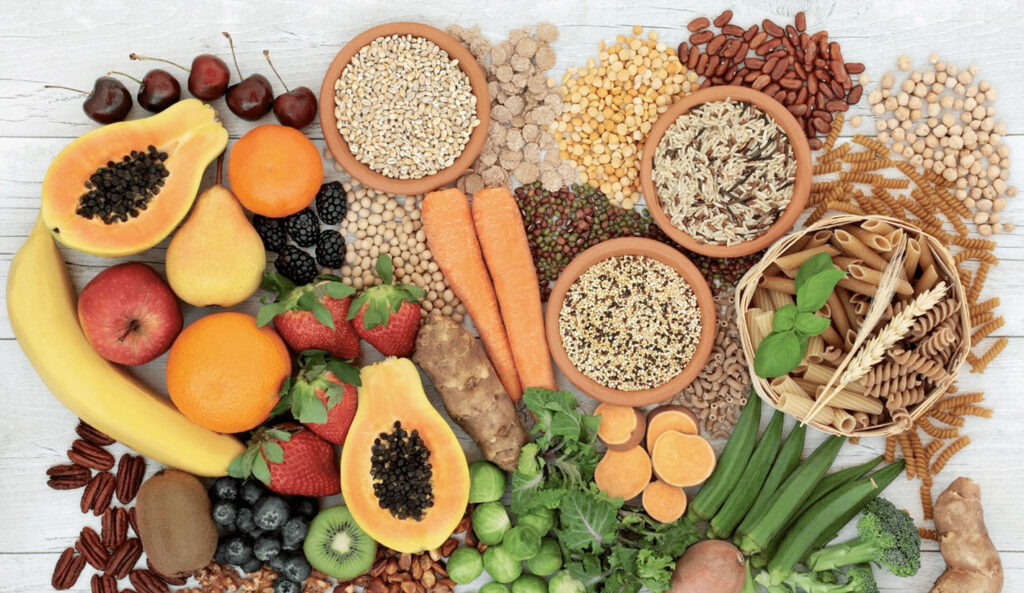The Role of Fiber in a Nutritious Diet
Are you ready to unleash the wonders of a healthy lifestyle? Look no further – the key lies in understanding the role of fiber in a nutritious diet. Fiber is often overlooked, but it is an essential component that contributes to overall health and well-being. In this comprehensive guide, we will delve into the importance of fiber and how it affects various aspects of our bodies. Join us as we embark on a journey to unlock the secrets behind the power of fiber!
The Substantial Benefits of Fiber
Fiber is a superhero nutrient that offers a myriad of advantages, including improved digestive health, cholesterol management, weight control, and even disease prevention. Let’s explore each of these benefits in detail.
Enhanced Digestive Health
Have you ever experienced the discomfort of bloating, constipation, or irregular bowel movements? Fiber to the rescue! High-fiber foods aid in maintaining regularity and preventing pesky gastrointestinal issues. The indigestible nature of fiber adds bulk to our stool, promoting a healthy digestive system. Regular consumption of fiber-rich foods can alleviate constipation, ensuring optimal bowel movements.
Managing Cholesterol Levels
Elevated levels of bad cholesterol (LDL) can lead to heart disease and other cardiovascular problems. Fortunately, fiber acts as a knight in shining armor, aiding in the reduction of LDL cholesterol levels. Fiber binds to cholesterol in the digestive tract, preventing its absorption into the bloodstream. This prevents the buildup of harmful cholesterol, promoting a healthier heart and reducing the risk of heart disease.

Weight Management
Are you one of those individuals who constantly battles with weight management issues? Fear not; fiber is here to assist you in your journey to shed those extra pounds. High-fiber foods provide a feeling of satiety and promote a longer-lasting sense of fullness, reducing the temptation to overeat. Additionally, they slow down the digestion process, helping you maintain stable blood sugar levels and prevent rapid spikes. Incorporating fiber into your diet is a smart move towards achieving your weight loss goals.
Disease Prevention
Are you ready to arm your body against disease? Fiber is the secret weapon you need. A diet rich in fiber has been associated with a lower risk of developing various diseases, including diabetes, certain types of cancers, and even diverticular disease. By promoting regular bowel movements and reducing the absorption of harmful substances, fiber acts as a valuable shield against these conditions.
How to Accomplish a Fiber-Full Diet
Now that we understand the numerous benefits of including fiber in our diet, let’s explore how we can easily incorporate fiber-rich foods into our daily lives.
1. Start Your Day with Whole Grains
Kickstart your mornings by opting for whole-grain cereals or bread. These contain higher amounts of fiber compared to their refined counterparts. Not only will this provide a wholesome breakfast, but it will also give you the necessary energy to conquer the day ahead.
2. Embrace the Rainbow of Fruits and Vegetables
Your plate should be a vibrant canvas! Colorful fruits and vegetables are not only visually appealing but also packed with fiber. Incorporate a variety of options such as raspberries, broccoli, avocados, and carrots into your meals.
3. Legumes and Beans: Your New Best Friends
Who knew that beans could be your secret fiber weapon? Legumes, including lentils, chickpeas, and black beans, are fantastic sources of both fiber and plant-based protein. Use them as the star ingredient in soups, stews, and salads.
4. Get Nutty with Nuts and Seeds
Nuts and seeds are excellent crunchy additions to your meals, providing healthy fats, protein, and, of course, fiber. Sprinkle chia seeds onto your yogurt or add some crushed walnuts to your oatmeal for an extra fiber boost.
Daily Fiber Recommendations
Recommended Intake for Adults
Consuming an adequate amount of fiber is essential for maintaining good health. The recommended daily intake of fiber for adults varies based on age and gender.
For adult men:
- The recommended fiber intake is around 38 grams per day.
For adult women:
- The recommended fiber intake is about 25 grams per day.
These values are general guidelines and may differ for individuals with specific dietary needs or health conditions. It is always recommended to consult with a healthcare professional or registered dietitian for personalized recommendations.
Adjustments for Age and Gender
As we age, our nutritional needs may change. This includes the recommended intake of fiber. Here are some adjustments to fiber requirements based on age:
For adults over 50 years old:
- Men: The recommended fiber intake decreases slightly to around 30 grams per day.
- Women: The recommended fiber intake also decreases slightly to about 21 grams per day.
During pregnancy and lactation:
- The recommended fiber intake for pregnant and breastfeeding women may vary. It is important to consult with a healthcare professional for personalized guidance.
Again, these values are general recommendations, and individual needs may differ. It’s always best to consult with a healthcare professional for specific dietary advice.
Challenges in Meeting Fiber Requirements
While it is clear that fiber is essential for a nutritious diet, many individuals face challenges in meeting the recommended daily intake. Some common hurdles include:
- Fast Food Culture: In today’s fast-paced world, fast food has become a convenient and popular choice for many people. However, most fast food options lack fiber, as they are often high in refined grains and low in fruits, vegetables, and whole grains.
- Processed Foods and Refined Grains: Processed foods, such as packaged snacks, baked goods, and sugary cereals, usually undergo extensive processing that strips away much of the fiber content. Similarly, refined grains, such as white flour and white rice, have had the bran and germ removed, resulting in reduced fiber content.
- Lack of Awareness: Many individuals may not be aware of the importance of fiber in their diet or the specific food sources that provide adequate fiber. This can lead to unintentional neglect of fiber-rich foods.
Addressing these challenges requires a conscious effort to plan and prioritize a fiber-rich diet. By making informed choices and incorporating fiber-filled foods into daily meals and snacks, it is possible to overcome these obstacles and meet the recommended daily fiber intake.

FAQs: The Role of Fiber in a Nutritious Diet
Q1: How much fiber should I consume daily?
A1: The recommended daily intake of fiber is around 25-30 grams for adults. However, it is essential to gradually increase your fiber intake to avoid digestive discomfort.
Q2: Can fiber help in weight loss?
A2: Yes, fiber aids in weight loss by promoting a feeling of fullness, curbing overeating, and stabilizing blood sugar levels.
Q3: Are there any side effects to consuming too much fiber?
A3: Consuming excessive amounts of fiber without gradually increasing your intake may lead to gas, bloating, and diarrhea. Stay mindful of your body’s needs and make dietary changes accordingly.
Conclusion
Congratulations! By understanding and incorporating the role of fiber in a nutritious diet, you are on your way to a healthier and more vibrant lifestyle. Remember, fiber is a versatile ally that supports your digestive health, cholesterol management, weight control, and disease prevention.
So, go ahead and revamp your diet with fiber-rich foods, and witness the incredible transformation in your overall well-being. Embrace the power of fiber, and let it pave the path to a better, healthier you.
Also Read:
The Ultimate Guide to Glowing Skin: Tips and Tricks



